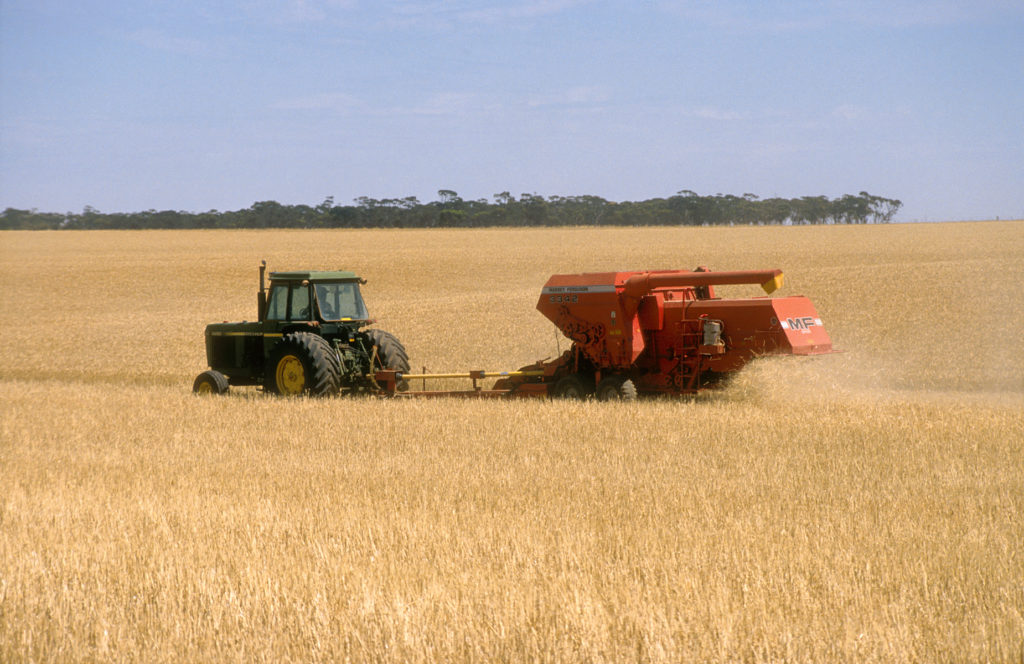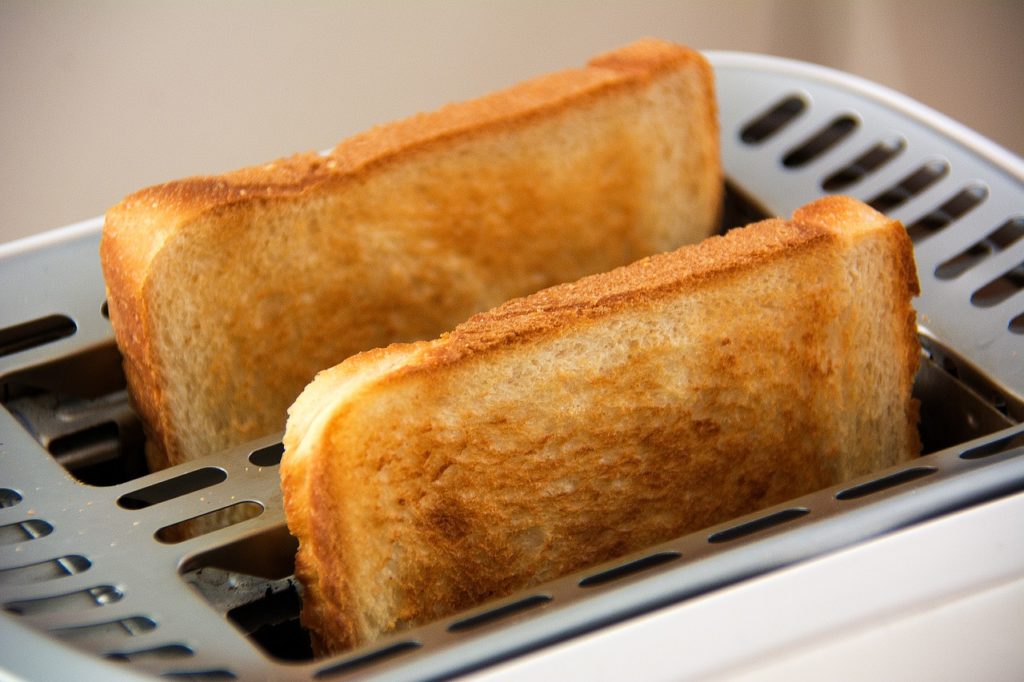
Does your bread get the green light when it comes to the environment?
Simple question: how green is your bread? No, we’re not asking how mouldy it is (that’s another story). We’re talking about the environmental friendliness of a simple loaf of white bread, and it’s an important question to ask, with around three-quarters of Australian shoppers buying bread each week. The answer can be pretty tricky, and you have a vital part to play in the final result.
Adding it all up
Using a method known as a life cycle assessment, we can calculate the environmental impacts that occur throughout the bread’s existence.
To begin with, there are land use considerations from the biodiversity impact on native flora and fauna. Then there’s water use, and thankfully Australian rain-fed wheat crops use minimal additional water. But that isn’t the case for irrigated crops like sugarcane for the sugar that’s added to your jam (we’ll get back to that later).
Australia’s dryland farmers are among the world’s best, and are making carbon efficiency improvements of about 1 per cent each year. But on the farm, nitrogen fertilisers are still one of the biggest factors for carbon emissions and the wheat seed needs to be planted and then harvested –all using machinery that uses diesel.
By the time enough wheat to make a loaf of bread leaves the farm, it’ll have generated, on average, around 200g of greenhouse gases per kg of wheat.

A tractor and header harvesting wheat.
A fine wheat crop. Image by John Coppi
Add one part flour, two parts energy, and stir
After the wheat is taken to a mill to be ground down to flour, it’s transported to a bakery. At this stage the wheat for our bread will meet other ingredients such as yeast, canola oil and vinegar, which have all made similar production journeys.
These steps of milling and baking require significant amounts of electricity. In a country like Australia, where we have a predominantly coal-based power grid, our electricity has a high emissions footprint. As a result, a kg of flour has about 270g of “embedded” greenhouse gas emissions, including those of the wheat growing.
Bonus factors to consider: what about the bread’s packaging – is it paper or plastic? It then needs to be transported to the store, where electricity keeps the lights on and check-outs operating.
Time to add your contribution to this

Allow us to propose a toast…
Got a hankering for bread? It’s time to go to the shops! But will you walk, catch public transport, or drive yourself? Also, will you nip down to the shops just for the bread loaf; or will you go for your one big weekly shop? The latter will spread the environmental impact across multiple grocery items.
Back at home, if you toast your bread – versus eating it fresh – you’re using around 1000 watts of electricity, which is about 12kg of CO2 yearly if you eat toast for breakfast every morning, or about 30g of CO2 for two slices of toast.
Adding a spread on your bread also impacts on your bread’s carbon emissions. Remember the sugarcane we mentioned earlier? Having a jam or preserve with added sugar will increase the impact compared to other spreads. Oh, and do you like to butter your bread? That’ll be around an extra 125g of CO2 per slice (15 grams of butter).
Ultimately a loaf of supermarket bread can cost your hip pocket anywhere from $1 to $8, and the total environmental cost across the entire life cycle (from farm to tummy) may vary by about as much. But if we crunch the numbers, a reasonable assumption is around 550g of CO2 per loaf, or some 25g per slice, before you’ve even touched it. So don’t overdo it on the butter!
This story is going off
But it turns out the worst thing you can do after buying a loaf of bread is… nothing.
Just think about all the time, effort and resources that went into making that tasty, fibrey goodness. After adding up all those factors from the farm to your pantry, the worst thing you can do is let any food go to waste and throw it out.
So the first step to making sure your loaf of bread has a big environmentally friendly green tick? Don’t let it turn green and mouldy.
Counting the cost
Life cycle assessments track the environmental impact of agricultural products.


10th March 2019 at 12:25 pm
I guess it’s greenest when I bake my own sourdough…. it consists of my starter, bakers flour, water and salt.
But I don’t do that often enough.
9th June 2018 at 4:26 pm
How many grams of greenhouse gasses are sequestered in 1 Kg. of seed wheat to be subtracted from 200g?
14th June 2018 at 11:17 am
Hi there, Rod
Here’s what our researchers had to say:
‘One kg of wheat contains about 350 gram of carbon which equates to temporary sequestration of 1.3 kg of CO2 from atmosphere. All of this is released again when the wheat is consumed in form of bread or otherwise. In LCA we only take temporary sequestration into account if the carbon stays in the product for more than 10 years and even then the effect is small. It is also important to note that when digesting the wheat, some of the carbon will actually be released in the form of methane (rather than CO2) which has a higher global warming potential. This is not typically taken into account in LCA however.
In short, the 1.29 kg of CO2 should not be subtracted from the wheat footprint because the net effect over the “life cycle” is zero or in fact a small addition to the carbon footprint.’
Thanks very much,
Jesse
Social Media Team
8th May 2018 at 5:09 pm
As an older person with arthritis in the hands, I can no longer knead dough for bread making. I buy bread from the closest Bakers Delight shop which at least does not use preservatives. I buy multiple loaves when I do a full shop and library trip and store them in the freezer. They taste really fresh (by the slice) when thawed and I rarely run out. As I dont have a corner shop close by, I also reduce my food miles. I think every little bit saves emissions for the good of all.
4th May 2018 at 12:41 pm
Most commercial breads contain genetically modified, round up sprayed soya these days which stops our bone repair bio-chemistry and one gets oesteoarthritis. Even bread advertised as organic rye often is riddled with such chemicals—- I eat soya free bread AND A SOYA FREE DIET now and am clear of this aging disease. Never put such bread where the birds can eat it, as their egg shells collapse, their beaks and legs are soft. Ref Take control of your health E.Hollingsworth ISBN0646402978
4th May 2018 at 10:59 am
My wife and I haven’t eaten bread for around 12 months now, very few grain products at all actually and are feeling great because of this way of eating. As a side note to our physical benefits we also feel strongly that instead of contributing to the damaging impact on top soils by supporting annual crops and putting our support into perennial livestock systems we are having a better impact on the planet.